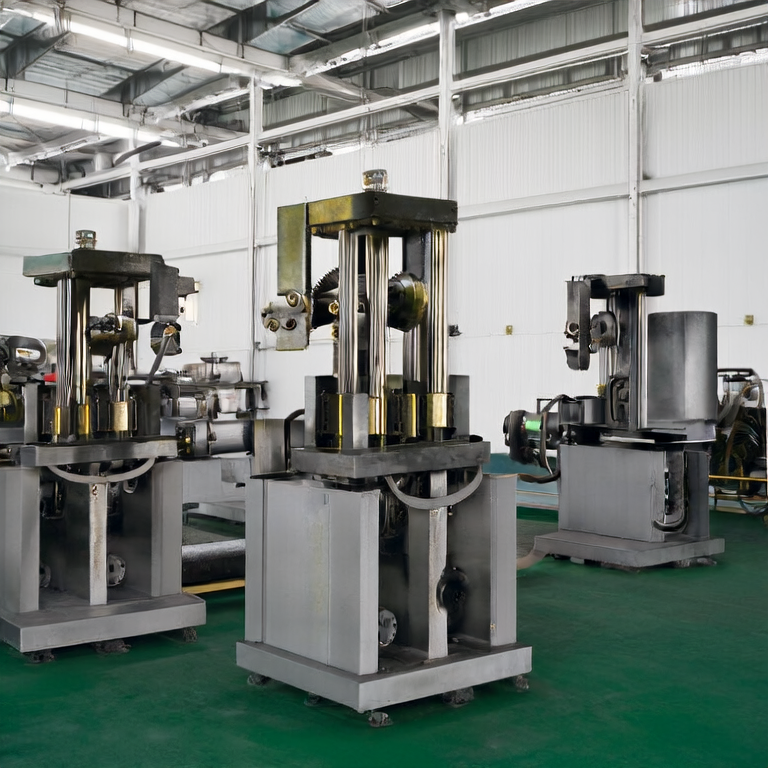
Forging Presses are pivotal in transforming raw materials into usable products across various industries. With their ability to exert immense pressure, these machines reshape metals and other materials into precisely defined shapes at high efficiency. The emergence of advanced forging technologies has brought significant improvements in material properties, including tensile strength and fatigue resistance, making the forging press a vital tool in the manufacturing process. In this article, we will explore the different types of forging presses, their applications, and their advantages, making it clear why investing in this equipment is crucial for manufacturing sectors, particularly in automotive, aerospace, and heavy machinery.

A forging press is a machine that deforms materials, primarily metals, through the application of compressive forces. Available in several designs, forging presses can be classified into three primary types: mechanical presses, hydraulic presses, and screw presses. Each type employs different mechanisms to achieve varying levels of force, making them suitable for diverse manufacturing applications.
Mechanical Presses: These utilize a flywheel to convert rotary motion into linear motion. They can exert forces ranging up to 1000 tons and are known for their speed, capable of achieving a stroke rate of up to 200 strokes per minute.
Hydraulic Presses: Leveraging hydraulic fluid to create pressure, hydraulic presses are incredibly versatile and can exert forces of over 4000 tons. They are particularly suitable for tools requiring higher force with a slower speed and are often used in heavy-duty applications.
Screw Presses: These are characterized by their use of a screw to generate pressure and can achieve forces up to 3000 tons. Their design allows for precise control over the deforming process, often used for intricate shapes and detailed designs.
Forging presses find applications across multiple industries. Here are a few key sectors where they play an essential role:
Automotive Industry: Forging presses are integral in manufacturing components such as crankshafts, gears, and connecting rods. According to a report by Statista, the global automotive parts market is predicted to reach about $695 billion by 2027, making quality manufacturing crucial.
Aerospace Sector: In aerospace, where safety and reliability are paramount, forging presses are used to create robust and lightweight structural parts. Research indicates that forged materials have a significantly higher fatigue resistance than their cast counterparts, making them preferable in this industry.
Heavy Machinery Production: Various components in construction and mining equipment are manufactured using forging presses, allowing for the creation of strong and durable parts capable of withstanding extreme conditions.
Understanding the advantages of using forging presses can significantly inform your purchasing decision. Here are some key points:
Improved Material Properties: Forged products are known for their superior mechanical properties. Forging processes can enhance strength by aligning the grain of the material, resulting in higher durability. A study cited in the Journal of Materials Engineering reveals that forged steel can exhibit strength increases of up to 50% when compared to cast steel.
Cost-Efficiency: Although the initial investment in forging presses can be substantial, the long-term benefits include reduced waste and less scrap material. Studies have shown that forging processes can reduce material costs by 20% or more compared to machining processes.
Versatility and Precision: Forging presses can accommodate a variety of materials and shapes, providing manufacturers with the flexibility to produce complex geometries. This adaptability was highlighted in a recent report from Machinery & Equipment, stating that manufacturers utilizing modern forging technology increased production efficiency by 30%.
If you are considering integrating forging presses into your production line, it’s essential to consult the user guide for the equipment you plan to use. Familiarizing yourself with operational protocols and maintenance tips can enhance machine longevity and performance.
What is the difference between mechanical and hydraulic forging presses?
Mechanical presses are faster and better for high-volume production, while hydraulic presses offer more control and are ideal for creating complex shapes.
How do I choose the right type of forging press for my business?
Consider the material types, desired product shapes, production volume, and budget constraints when selecting a forging press.
What are some safety precautions to take when using a forging press?
Always ensure proper training for operators, use protective equipment, and conduct routine maintenance checks to ensure safety and efficiency.
Investing in a forging press can significantly enhance production capabilities and material quality in various manufacturing sectors. For further understanding or to explore trial options, consider reaching out to companies such as S-T Intelligence, which specialize in cutting-edge forging technology.
By staying updated on industry developments and trends, businesses can leverage the advantages of forging presses to stay ahead in competitive markets.
Excellent customer service is our highest priority. We are committed to providing our customers with the best service both before and after the order.
